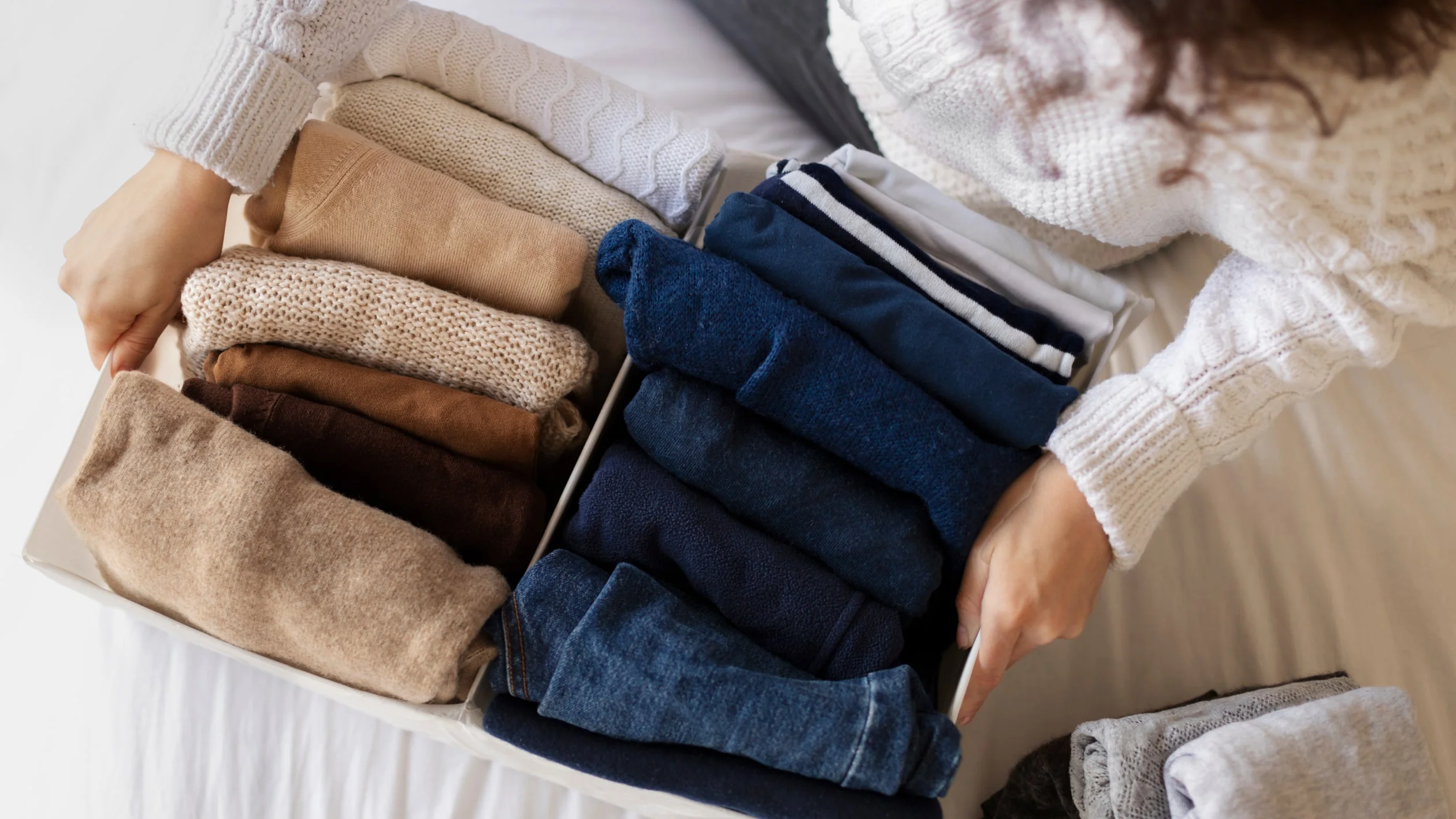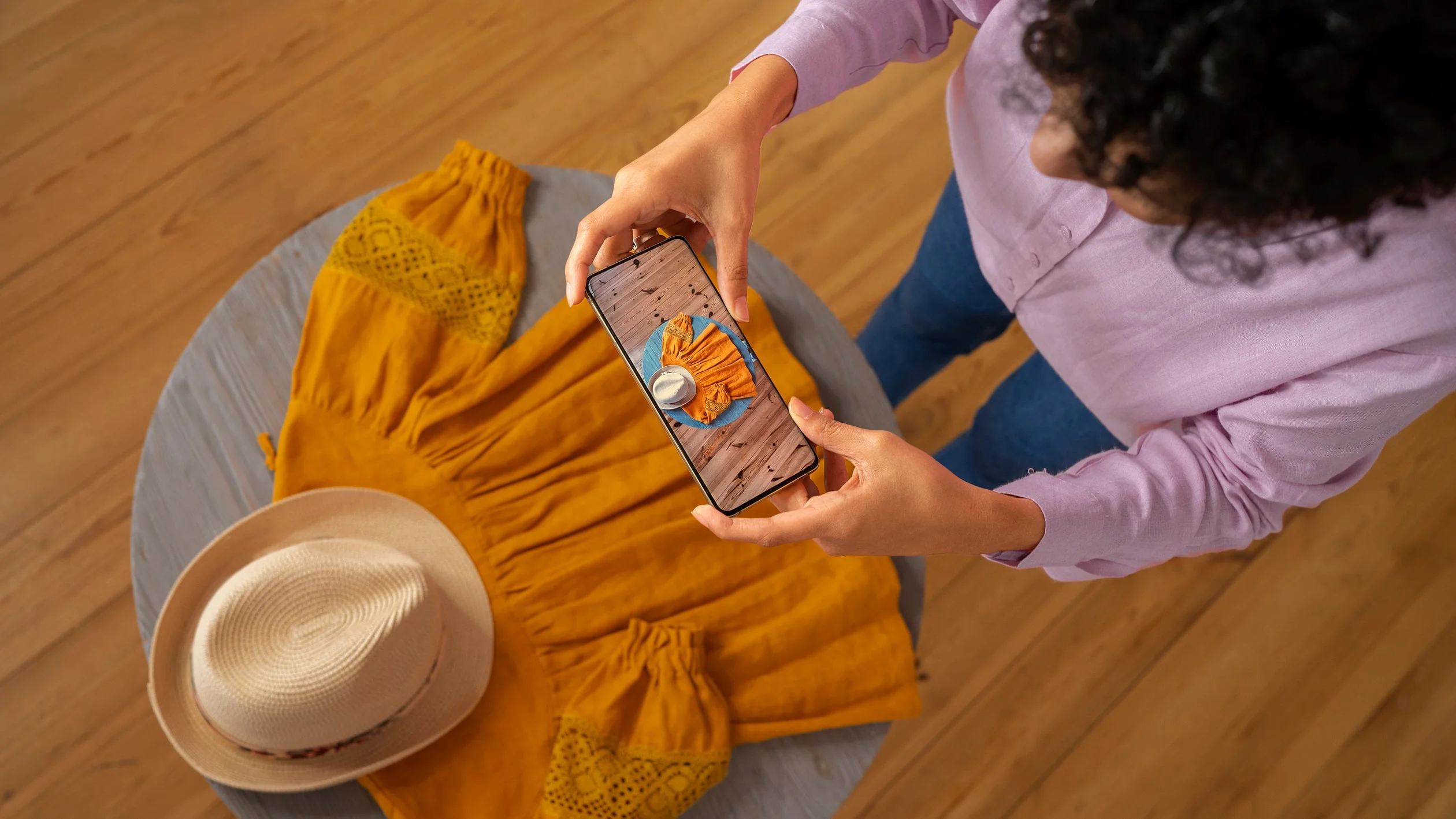Do you actually know what's in your wardrobe? No, seriously. Can you mentally picture every single piece hanging there right now? Or do most of your clothes only get "discovered" when you're frantically pulling everything out, searching for something decent to wear, only to realise nothing feels quite right? Maybe you've tried creative new ways to mix what you have, but somehow you still end up wearing the same few pieces while the rest gather dust.This wardrobe refresh approach tackles that exact problem.
We're not talking about dramatic minimalism or following rigid capsule wardrobe rules. We're doing this to understand what we actually own, figure out what works for our real lives, and stop the cycle of buying stuff we already have.
This guide walks you through a practical process for getting real clarity about your clothes. No perfectionist standards, no one-size-fits-all rules. Just a straightforward method for organising what you have and preventing future wardrobe overwhelm.
Most wardrobes tell the same story: jeans that felt perfect in the shop but somehow never look right at home. Dresses bought for events that never happened. Enough basic t-shirts to supply a small town, yet nothing that feels quite right for today's plans.
It builds up over time without you really noticing. You buy things for the version of yourself you imagine becoming. The office job that needs more blazers. The social events that need fancier dresses. Sometimes you just grab something because it looks good in the shop window.

Then one day you open your wardrobe and realize none of it fits your actual life. Time for a moment of truth: do your clothes and your real self even get along?
Going through everything piece by piece forces some honest conversations. You'll quickly see which colours you actually reach for versus which ones seemed like a good idea. Which cuts work on your body versus which ones you convinced yourself would work. Which pieces suit your actual schedule versus your imaginary social calendar.
The environmental angle matters here too, but it's a natural byproduct rather than the main goal. When you actually wear the clothes you own, you naturally buy less new stuff. When you pass along pieces that don't work for you, they get proper use instead of taking up landfill space.
Let's be honest — this process can stir up some complicated emotions. That expensive dress you wore exactly once. The jeans that represent your "someday I'll fit into them again" fantasy. The jacket that made perfect sense at the time but now just hangs there, judging you.
Look, we've all made questionable clothing purchases. Holding onto them won't change what you spent or make them magically work for your life. Your priorities have probably shifted anyway since you bought most of this stuff.
Pick a time when you're feeling energetic and won't have people interrupting every five minutes. You know what puts you in a good mood — music, coffee, whatever works. The whole point is making this feel manageable rather than overwhelming.
And here's something crucial: perfection isn't the goal. You don't need to create some Instagram-worthy minimalist capsule wardrobe if that's not your style. The goal is simply to create a space that feels good and functions well for your actual life.
Alright, let's get practical. The most effective way to tackle this is the "everything out" method. Yes, it'll look like a bomb went off in your bedroom initially, but trust the process.
Step 1: Empty Everything Out
Start with one category at a time — all your tops, then bottoms, then dresses, and so on. Lay everything out on your bed where you can actually see it all. This step alone is often eye-opening. Most people discover they own way more clothes than they realised.
Step 2: Create Your Sorting System

You'll need four distinct areas or piles:
Your "Love & Keep" pile is the easy stuff — pieces that make you feel good when you wear them. Things that actually fit your current body shape, work with your actual lifestyle, and don't make you feel like you're playing dress-up. These are the clothes you can mix into new outfits without thinking too hard. Simple test: if you haven't touched it in over a year, it's probably not love.
The "Maybe" box is for those tricky in-between pieces. Maybe they're seasonal items you're unsure about, or pieces that almost work but don't quite fit right. Box these up and store them somewhere accessible but out of sight. If you don't reach for anything in this box over the next three months, it's time to let them go.
Your "Mend/Alter" pile is for items with potential. That shirt missing a button, the jeans that need hemming, the sweater with a tiny hole — these go here. But be realistic about what you'll actually fix. If it's been broken for months and you haven't dealt with it, you probably won't.
The "Let Go" pile is for everything else. These might be pieces that you no longer love, don't fit your current lifestyle, or simply don't spark any joy when you hold them.
Step 3: The Try-On Test
For anything you're unsure about, put it on. This isn't negotiable. How does it actually look and feel on your body right now? Does it make you feel confident? Can you think of at least three ways to wear it? If the answer is no, it goes in the "Let Go" pile.
Step 4: Consider Your Lifestyle
Be brutally honest about your actual life. If you work from home most days, keeping 15 blazers doesn't make sense. If you live in thongs and casual wear, those heels gathering dust might need to find a new home. Your wardrobe should reflect how you actually live, not how you think you should live.
Here's where things get interesting — and where your wardrobe refresh becomes part of something bigger. That "Let Go" pile doesn't have to head straight to landfill. In fact, it absolutely shouldn't.
Reselling Options For pieces in good condition, consider selling them online. Try Depop for trendy pieces, Facebook Marketplace for everyday stuff, or platforms like The RealReal if you've got designer items. Designer and vintage pieces usually move faster, but don't expect miracles with fast fashion — there's just too much of it around. Be realistic about pricing — you'll typically get 25-40% of what you originally paid. Take photos in decent light, mention any issues upfront, and add measurements if the sizing seems off. Whatever money you make can fill those actual gaps you discovered.

Donation Done Right Not everything needs to be sold. Local charities, women's shelters, and community organisations often welcome clothing donations. But here's the key: donate responsibly. Only give items you'd be happy to receive yourself. Clean, undamaged pieces that someone would genuinely want to wear.
Call ahead to check what they actually need. Some organisations have specific requirements or may be overwhelmed with certain types of clothing at different times of year.
Textile Recycling For stuff that's genuinely too ratty to pass on to anyone else, check if your area has textile recycling options. Many stores and councils run programs where old fabrics get turned into new materials instead of heading to landfill.
Once you've sorted through everything, the trick is setting up your space so it actually stays organised. Skip the Pinterest-perfect wardrobe systems — they look great but rarely work in real life.
Start with basics that make sense. Put similar things near each other, but don't obsess over it. Your jeans can live together, your work shirts in another spot. The point is being able to find what you need without excavating through piles.
Hangers matter more than you'd expect. Mismatched ones make everything look chaotic, even when it's perfectly organised. Get a bunch of the same type — nothing fancy, just consistent. Your wardrobe will instantly look more put-together.
Accessories are tricky because they disappear so easily. Those bags shoved on the floor, the belts tangled in a drawer — they might as well not exist. Simple hooks, clear boxes, anything that keeps them visible works better than elaborate storage systems you'll never maintain.
Here's something that actually saves time: keep a few complete outfits together somewhere accessible. Not Instagram-worthy displays, just combinations you know work for busy mornings. When you're running late, grab and go instead of standing there in a towel trying to coordinate colours.
If you're interested in taking this further, now's a good time to think about organizing your "capsule" section for effortless everyday dressing. A collection of basics that all work together can simplify your routine dramatically. Our guide on Capsule Wardrobe Essentials: Must-Have Pieces for Timeless Outfits covers how to build this kind of functional foundation.

Seasonal rotation prevents your wardrobe from exploding again. Store winter coats during summer, sandals during winter. Obvious, but easy to forget until everything's crammed together again.
Here's where all this organisation pays off. When you actually know what you own, you stop buying duplicates or things that don't fit your life.
Keep notes about real gaps you discovered during decluttering. Maybe you need a decent blazer for work meetings, or flats that don't destroy your feet. Having specific targets makes shopping much more focused.
Our detailed guide A Mindful Guide on How to Stop Impulse Buying: The Psychology Behind Your Shopping Cart covers the psychological side of this process — understanding why certain shopping urges hit and how to work with them instead of against them.
Try the one-in-one-out approach. New dress comes home, old dress goes out. It sounds restrictive, but it prevents that gradual slide back into wardrobe chaos. Every new item means something else should go, preventing gradual re-accumulation.
Your wardrobe refresh journey is really about more than just organising clothes — it's about creating a foundation for more mindful consumption. When you understand what you truly love and actually wear, those impulse purchases lose their appeal. You start seeing through the marketing tactics and social media pressure that drive so much unnecessary shopping.
This shift toward understanding what you own versus constantly acquiring new items represents a fundamental change in how we approach fashion. The environmental benefits compound over time — every piece you rediscover reduces demand for new production, every donated item extends product lifecycles.
Ready to take your conscious shopping to the next level? Check out Aloto at finder.aloto.com to discover sustainable inspirations for any genuine wardrobe gaps you've identified. Finding brands that actually match what you care about makes sense after all this work. Once you've got a wardrobe that works, every new purchase feels more intentional. You stop buying random stuff because you know what you need and what you don't. Opening your closet becomes satisfying instead of stressful — which honestly makes the whole process worth it.